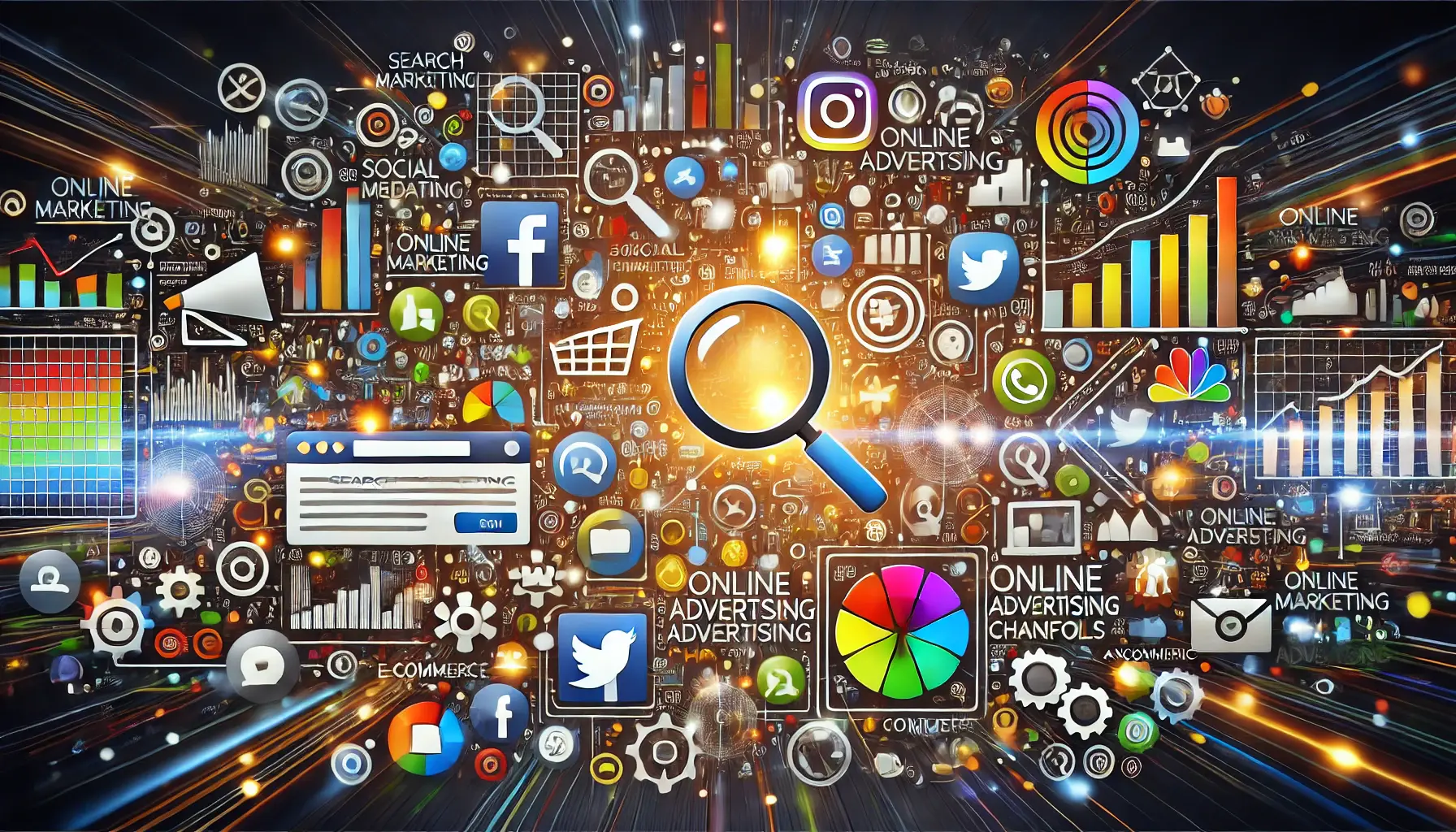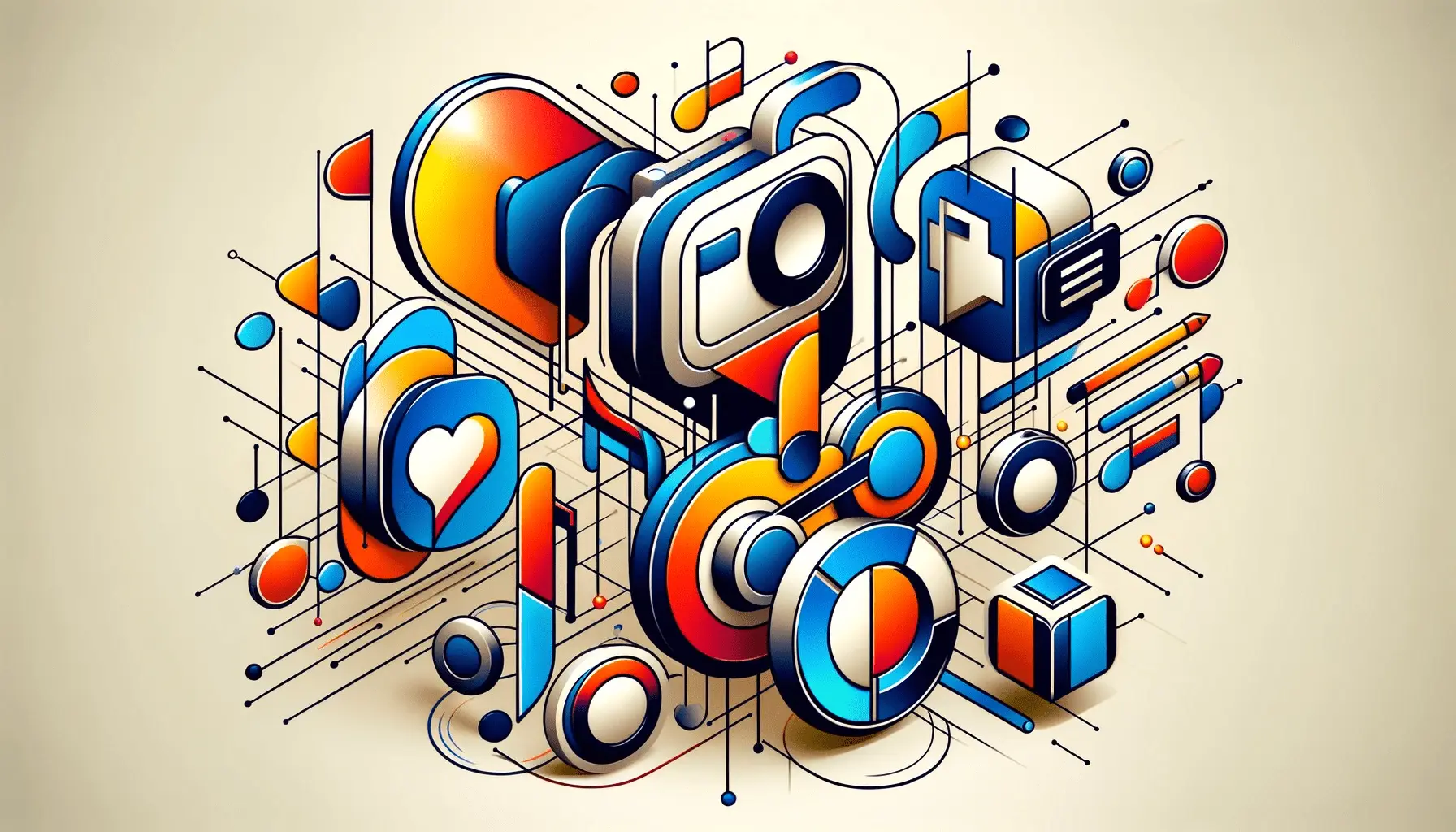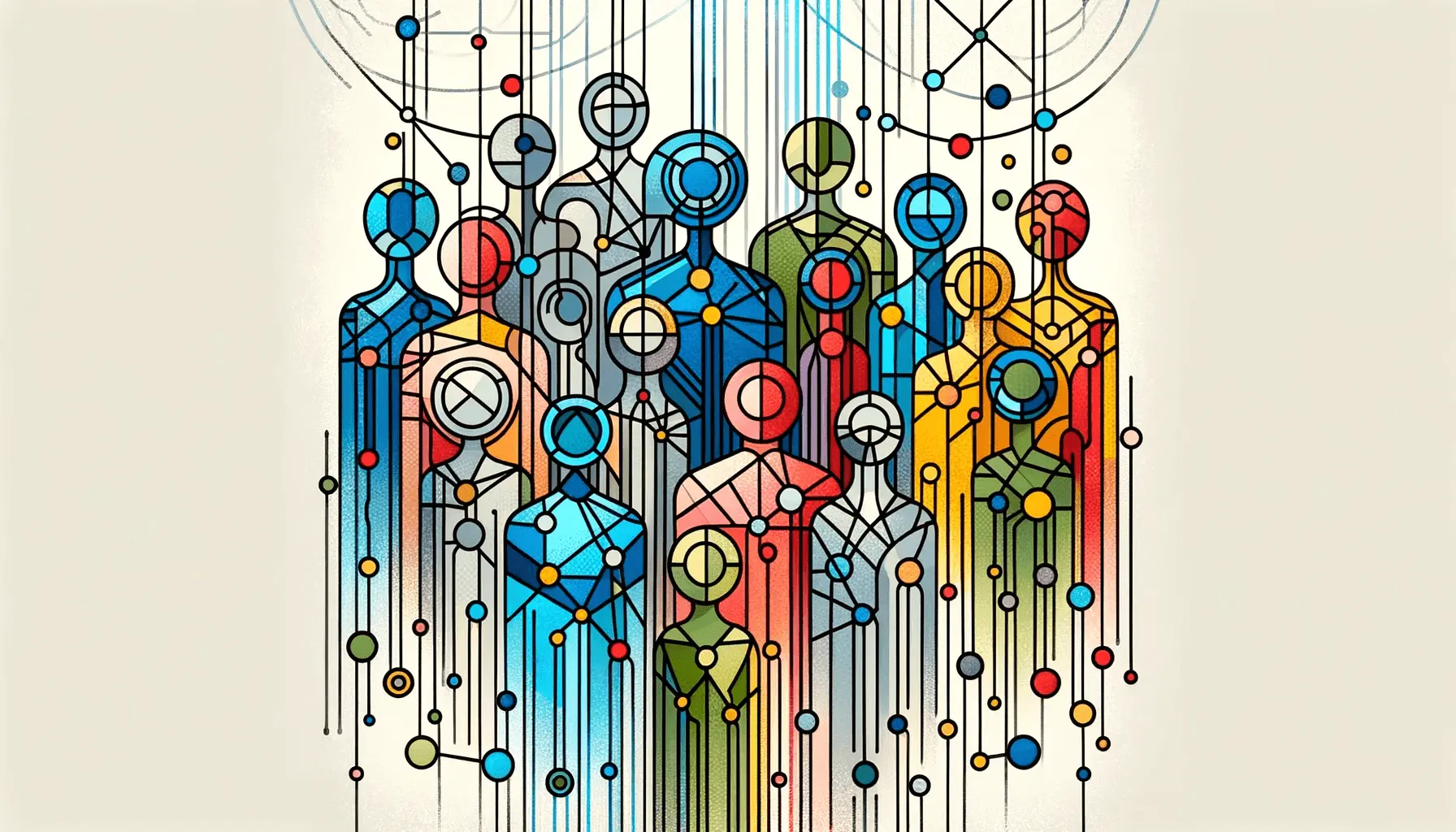In today’s fast-moving digital space, businesses like yours are constantly seeking the best ways to reach their target audiences.
While Google Ads has been a staple in online advertising for a while now, exploring other options may be just what you need to expand your marketing and perhaps achieve even better results.
This is where considering Google Ads alternatives will enable you to reach new audiences, optimize your advertising budget, and further improve your overall digital marketing strategy.
- Alternatives to Google Ads: Introduction
- Top Search Engine Advertising Alternatives
- Social Media Advertising Platforms
- Native Advertising Networks and Programmatic Advertising Platforms
- Emerging Advertising Platforms: Exploring New Frontiers
- Summary: Exploring Google Ads Alternatives for Effective Digital Marketing
- Questions and Answers About Alternatives to Google Ads
Alternatives to Google Ads: Introduction
Relying solely on Google Ads exposure can cap your reach and may not always be the best use of your advertising dollars.
Diversifying your channels allows you to reach prospects at different touchpoints and reduces your dependency on one source for leads.
Exploring Google Ads alternatives also opens up new ways of reaching users through innovative strategies.
Have you ever wondered how other businesses successfully reach their audiences beyond Google Ads?
Let’s delve into some compelling reasons to consider alternative advertising platforms.

Visualizing the importance of diversification in digital advertising strategies.
The Need for Diversification in Digital Advertising
Focusing exclusively on one advertising platform can make your marketing strategy vulnerable to changes in algorithms, increased competition, and rising costs.
By diversifying your advertising efforts, you can:
- Expand your reach: Different demographics use different platforms, which can help you connect with a wider and more diverse group of potential customers.
- Save money: Some alternative platforms may offer cheaper cost-per-click (CPC) rates, enabling you to get more value from your budget.
- Improve engagement: Various platforms provide unique ad formats and targeting options that may result in higher user engagement.
By embracing a diversified approach, you’re not putting all your eggs in one basket, safeguarding your marketing efforts against unforeseen challenges.

Highlighting the challenges of dependency on a single advertising platform like Google Ads.
Limitations of Relying Solely on Google Ads
While Google Ads is a powerful tool, relying exclusively on it has its drawbacks:
- High competition: Popular keywords can be highly competitive, driving up costs and making it challenging for smaller businesses to compete.
- Ad fatigue: Users may become desensitized to ads on a single platform, reducing their effectiveness over time.
- Platform dependency: Major changes in Google’s policies or algorithms can significantly impact your campaigns, leaving your strategy vulnerable.
In the following sections, we will explore various Google Ads alternatives, including search engine options, social media platforms, native advertisingA type of advertising that matches the form and function of the platform on which it appears. networks, and programmatic advertisingThe automated process of buying and selling digital ad space in real time. solutions.
Each of these offers unique benefits that could help you better reach your marketing goals.
Diversifying your advertising platforms ensures a broader reach and reduces dependency on a single source for leads. This is crucial for long-term success in a competitive digital space.
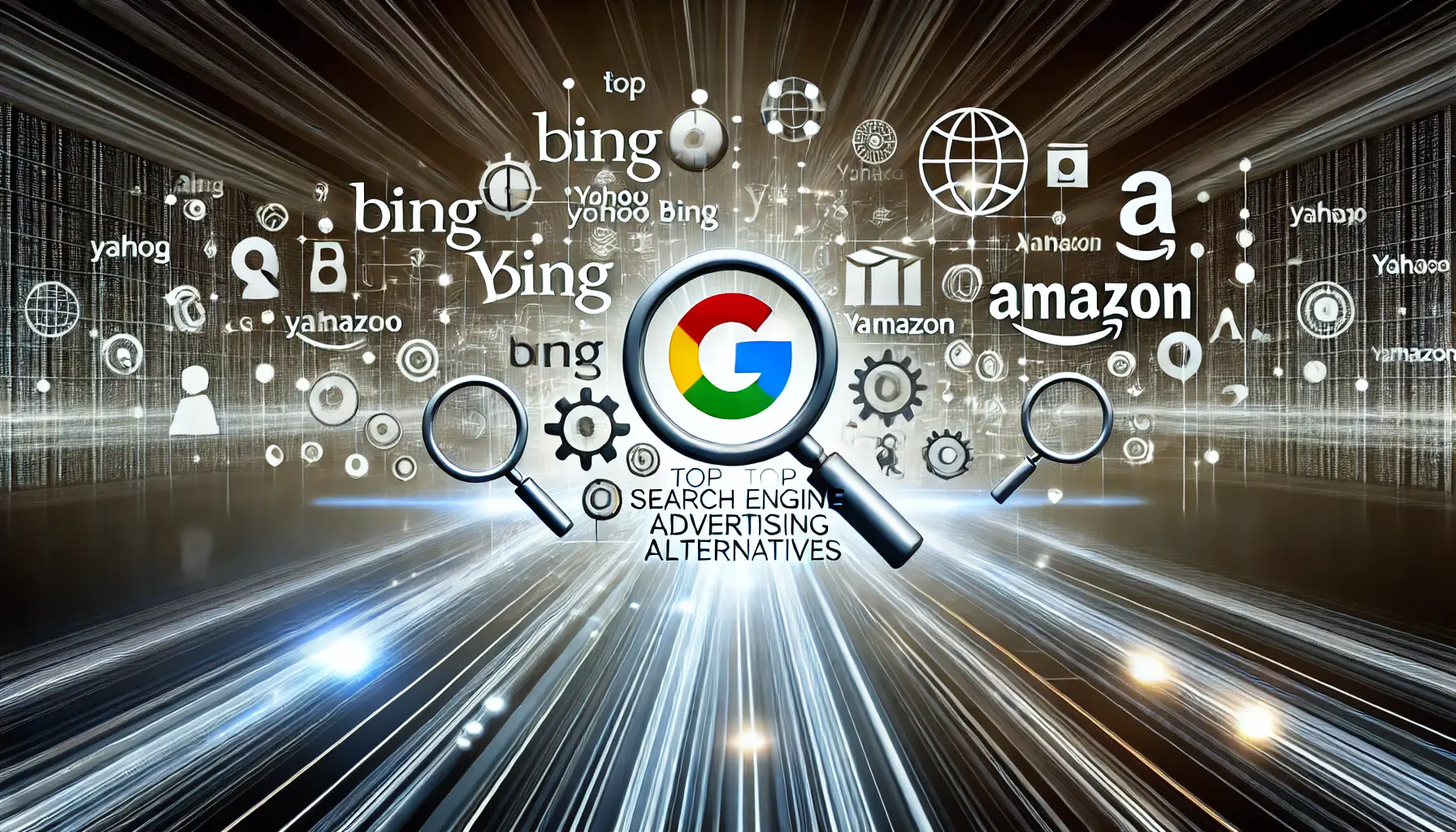
Visualizing top search engine advertising alternatives beyond Google Ads.
Top Search Engine Advertising Alternatives
Exploring alternatives to Google Ads can open new avenues for reaching your target audience effectively.
Let’s delve into some of the top search engine advertising platforms that can complement or even enhance your digital marketing strategy.
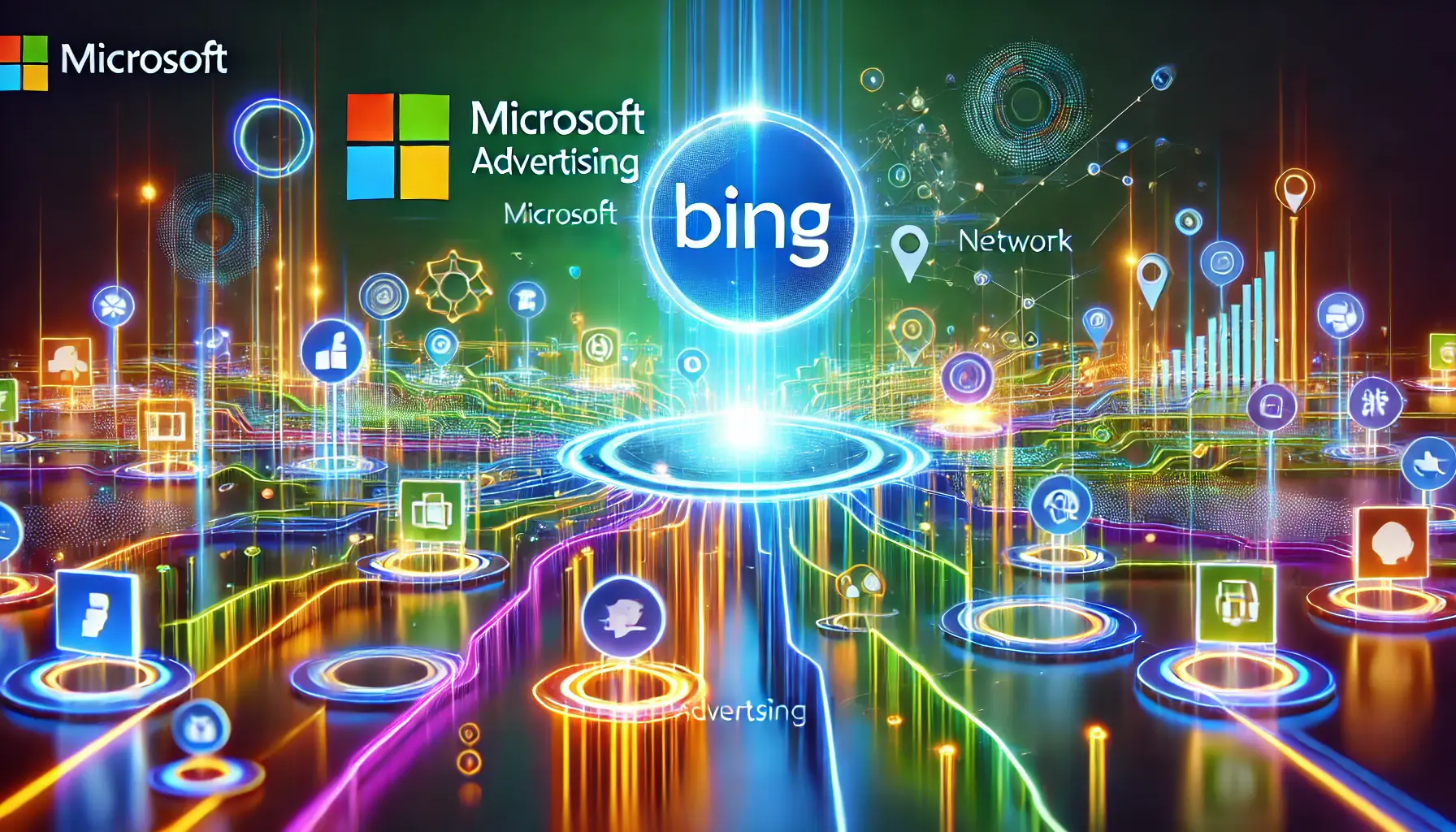
Depicting the potential of Microsoft Advertising and the Bing Network in digital marketing.
Microsoft Advertising: Leveraging the Bing Network
Formerly known as Bing Ads, Microsoft Advertising allows you to show your ads on the Bing search engine and its partner networks, including Yahoo and AOL.
While Bing has a smaller market share compared to Google, it still holds a significant stake in the search landscape, especially in the United States.
More importantly, Bing users often represent a unique demographic, including an older and more affluent audience, which can align with your target market.
Benefits of Microsoft Advertising include:
- Cost-Effectiveness: With fewer competitors, CPC rates are often much cheaper than Google Ads.
- Unique Audience: The ability to reach users that may not be captured via Google, thus expanding your market reach.
- Integration with LinkedIn: Microsoft Advertising allows for targeting LinkedIn profiles for more specific B2B marketing.
By incorporating Microsoft Advertising into your marketing mix, you can diversify your advertising channels and tap into a unique segment of search users.
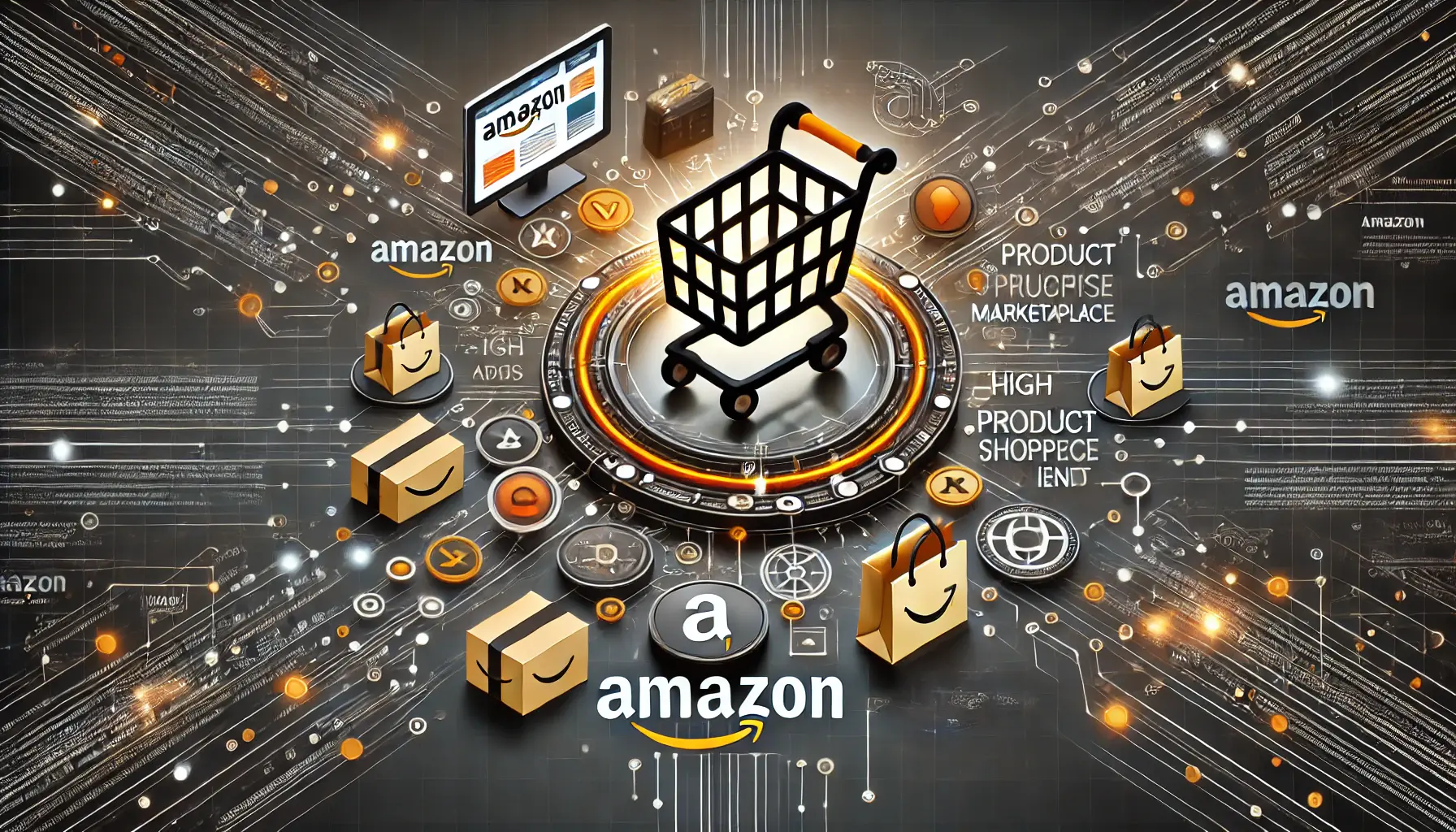
Highlighting Amazon Advertising as a direct channel to reach shoppers with high purchase intent.
Amazon Advertising: Reaching Shoppers Directly
Amazon has also grown as a strong player in the digital advertising space.
With Amazon Advertising, you can place ads directly on Amazon’s platform, targeting users who are actively searching for products.
This is especially advantageous for e-commerce businesses seeking to reach people with high purchase intent.
Key benefits of Amazon Advertising:
- High Purchase Intent: Ads are shown to users with an already initiated buying mindset, increasing the likelihood of conversion.
- Detailed Targeting: Amazon has vast amounts of consumer data that can be used to target ads based on shopping behavior, interests, and demographics.
- Ad Format Variations: Sponsored Products, Sponsored Brands, and Display Ads are some of the available advertising formats.
By integrating Amazon Advertising, your visibility to potential customers who are ready to buy will increase, boosting both your sales and return on investment.
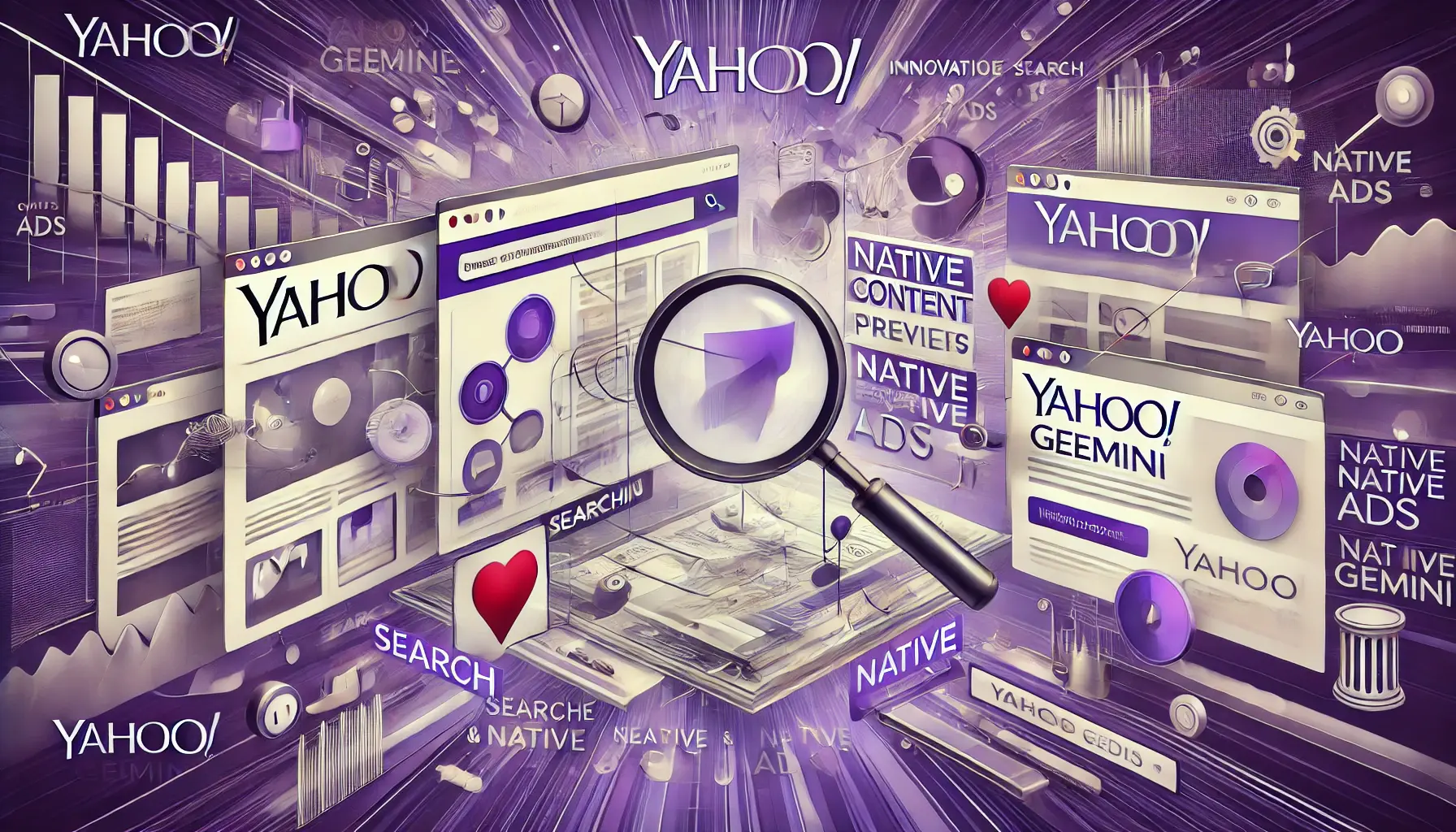
Showcasing Yahoo Gemini’s seamless integration of search and native advertising formats.
Yahoo Gemini: Search and Native Ad Integration
Yahoo Gemini, now part of Verizon Media Native, integrates search and native advertising seamlessly.
This platform enables you to reach audiences through both traditional search ads and native ads that blend naturally with the content users are engaging with.
Benefits of using Yahoo Gemini include:
- Search and Native Ads: Advertise across search and native inventories, leveraging both to expand reach and engagement.
- Improved User Experience: Native ads resemble the content that surrounds them, further enhancing user engagement.
- Advanced Targeting: Demographic, interest, and behavioral data ensure your ideal target audience is reached effectively.
By implementing Yahoo Gemini, your advertising strategy will be more comprehensive, reaching users at multiple touchpoints and ensuring better brand awareness and engagement.
These Google Ads alternatives offer your business diverse opportunities to reach potential customers effectively.
Each platform has unique features and audiences to make your advertising work more efficiently.
Explore platforms like Microsoft Advertising and Amazon Advertising to tap into unique user demographics and expand your market reach.

Depicting the power of social media advertising platforms in connecting with diverse audiences.
Social Media Advertising Platforms
In today’s digital age, social media platforms have become indispensable tools for businesses aiming to connect with their target audiences.
Diversifying your advertising strategy to include social media can enhance brand visibility, foster engagement, and drive conversions.
Let’s explore some of the leading social media advertising platforms that can serve as effective Google Ads alternatives.
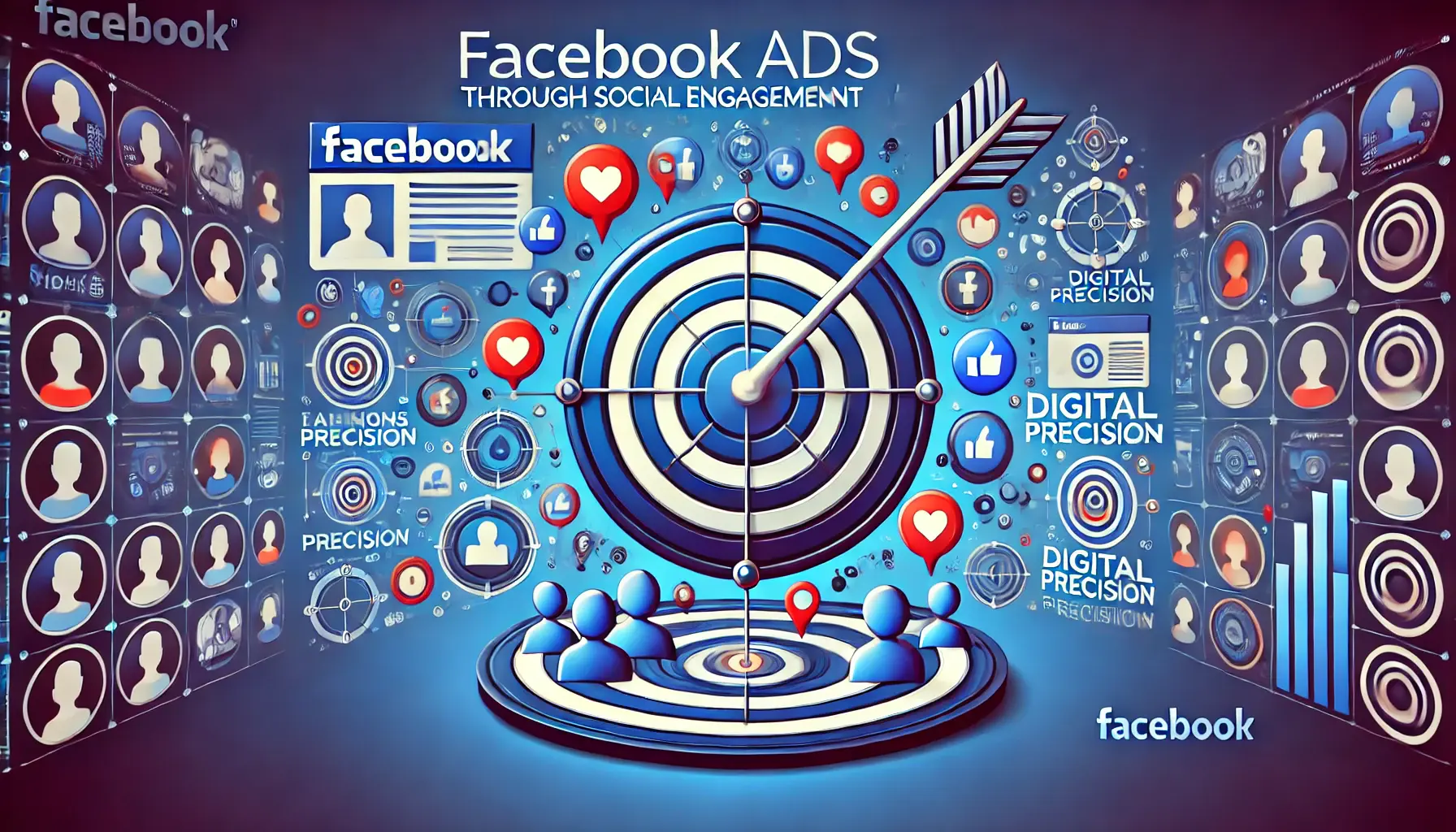
Visualizing Facebook Ads’ targeting capabilities through social engagement and user interaction.
Facebook Ads: Targeting Through Social Engagement
With over 3 billion monthly active users, Facebook remains one of the juggernauts of the social media world.
Its advertising platform offers solid targeting capabilities, from demographics and interests to behaviors and more.
This level of precision lets you tailor your ads to specific audience segments, increasing the likelihood of both engagement and conversion.
Key advantages of Facebook Ads include:
- Extensive Reach: Ability to connect with a vast and diverse user base across different demographic segments.
- Advanced Targeting: Options to build detailed audience profiles for accurate ad delivery.
- Ad Format Variety: A wide range of formats, including image ads, video ads, and carousel ads, to suit different marketing objectives.
Through Facebook Ads, you can drive user engagement in social scenarios and build a community around your brand in meaningful ways.

Showcasing Instagram Ads as a powerful tool for visual storytelling in branding and marketing.
Instagram Ads: Visual Storytelling for Brands
As a visually-centric platform with over 2 billion monthly active users, Instagram is ideal for brands looking to showcase their products or services through compelling imagery and videos.
Integrated with Facebook’s advertising system, Instagram allows for seamless ad creation and targeting.
Benefits of advertising on Instagram include:
- High Engagement Rates: Users on Instagram tend to engage more with content, leading to higher interaction rates.
- Visual Appeal: The platform’s focus on visual content enables brands to create aesthetically pleasing ads that capture attention.
- Reach of Younger Demographics: Instagram is predominantly used by younger audiences, making it suitable for brands targeting this group.
By using Instagram Ads, you can tell your brand’s story in a visually engaging manner that inspires users and prompts them to take action.

Visualizing LinkedIn Ads as a key platform for B2B marketing and professional networking.
LinkedIn Ads: B2B Marketing Opportunities
For companies focusing on B2B marketing, LinkedInA professional social network used primarily for business networking and career development. is a professional social network with more than 900 million members worldwide.
Its advertising platform allows targeting based on professional criteria such as job title, industry, company size, and more to reach decision-makers and professionals effectively.
The advantages of running ads on LinkedIn include:
- Professional Audience: Access to a network of professionals and industry leaders.
- Precise B2B Targeting: Targeting based on professional attributes and company information.
- Variety of Ad Formats: Includes sponsored content, message ads, and dynamic ads designed for professional engagement.
Incorporating LinkedIn Ads into your marketing arsenal will extend your reach into the professional community, facilitating valuable B2B connections and opportunities.
By understanding these social media advertising platforms and leveraging their unique strengths, you can spread your marketing efforts beyond Google Ads and effectively engage with your target audience.
Social media platforms like Facebook, Instagram, and LinkedIn offer advanced targeting options and ad formats that enhance engagement and brand visibility.
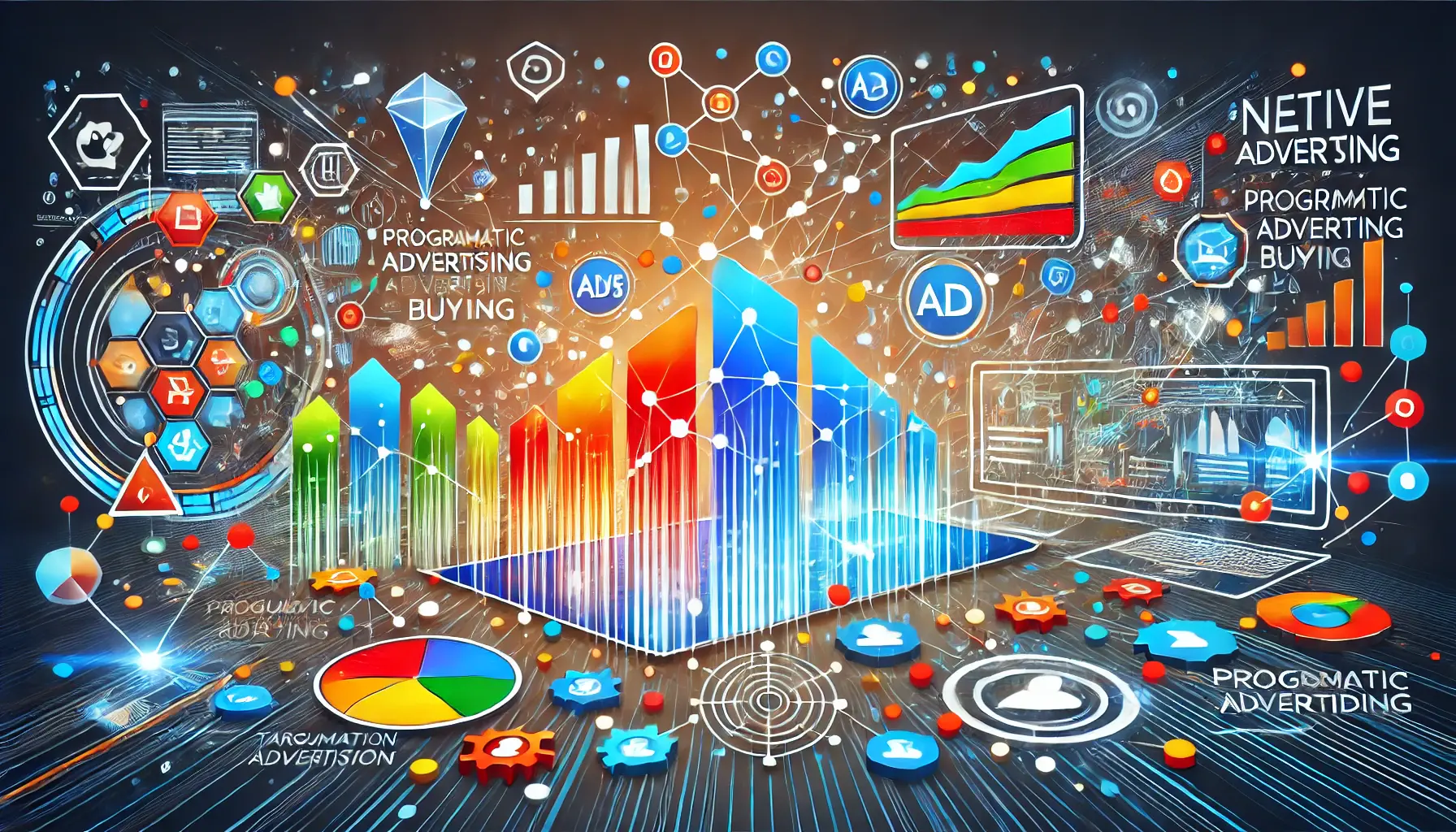
Visualizing the integration of native advertising networks and programmatic ad buying in digital marketing.
Native Advertising Networks and Programmatic Advertising Platforms
As the digital advertising landscape evolves, businesses are increasingly turning to native advertising networks and programmatic advertising platforms as effective Google Ads alternatives.
These approaches offer unique advantages in reaching target audiences with precision and efficiency.

Visualizing the seamless integration of native advertising networks for improved user engagement.
Native Advertising Networks: Seamless Integration for Enhanced Engagement
Native advertising focuses on placing advertisements that blend with the look, feel, and function of the media format in which they appear, ensuring a non-disruptive user experience.
Such ads tend to generate more engagement as they align naturally with the content.
Some leading native advertising networks include:
- Outbrain: A renowned platform that bridges the gap between marketers and premium publishers to empower content recommendations with a wide reach.
- Taboola: Known for its extensive network, Taboola helps businesses drive traffic and increase brand awareness by offering personalized content discovery.
- RevContent: Provides premium native ad placements with a focus on delivering engaging content to the right audience.
By leveraging these native advertising networks, businesses can create ads that resonate with users, fostering trust and driving higher conversion rates.

Visualizing the precision and automation behind programmatic advertising platforms in ad buying.
Programmatic Advertising Platforms: Automated Precision in Ad Buying
Programmatic advertising automates the buying and selling of ad space, utilizing real-time data and algorithms to efficiently reach users.
This approach makes ad campaigns more effective by delivering personalized content to the right audience.
Some of the best programmatic advertising platforms include:
- The Trade Desk: A leading demand-side platform offering a full suite of tools for data-driven ad buying across multiple channels.
- MediaMath: A powerful platform that provides advanced targeting capabilities, enabling marketers to optimize their programmatic campaigns effectively.
- Google Display & Video 360 (DV360): Seamlessly integrated with the Google ecosystem, DV360 serves as a unified platform for programmatic ad buying and campaign management.
Businesses can leverage programmatic advertising platforms to target their desired audiences with greater accuracy, optimize ad spending, and ensure better overall campaign performance.
Incorporating native advertising networks and programmatic advertising platforms into your marketing mix can serve as effective Google Ads alternatives, offering diverse ways of reaching your audience and achieving your advertising goals.
Native advertising and programmatic platforms like OutbrainA native advertising network that connects marketers with premium publishers for content discovery., TaboolaA platform specializing in native advertising, helping businesses increase traffic and brand awareness., and The Trade DeskA demand-side platform for programmatic ad buying across multiple channels. can significantly enhance user engagement through seamless ad integration and automation.

Visualizing the exploration of new advertising frontiers through innovative digital platforms.
Emerging Advertising Platforms: Exploring New Frontiers
In the dynamic landscape of digital marketing, staying ahead requires exploring emerging advertising platforms that offer innovative ways to connect with your target audience.
Diversifying beyond traditional channels like Google Ads alternatives can open new opportunities for engagement and growth.
Let’s delve into some of the promising platforms gaining traction in 2025.

Visualizing Pinterest Ads as a platform for discovery and shopping with interactive elements.
Pinterest Ads: Visual Discovery and Shopping
Pinterest has become a powerful visual discovery engine, with more than 450 million monthly active users seeking inspiration for everything from home decor to fashion.
Pinterest is aggressively courting advertisers, particularly as rival platforms like TikTok face uncertainties.
It highlights creative support and measurement services, including offering bonus ad space to attract advertisers.
Notably, half of TikTok’s U.S.
Gen-Z audience is also on PinterestA visual discovery engine where users can find ideas and inspiration for various interests, including shopping., emphasizing its appeal to younger demographics.
For e-commerce businesses, Pinterest users exhibit high shopping intent, making it a valuable platform for driving sales.

Visualizing Perplexity AI’s role in enhancing search advertising with advanced AI and machine learning.
Perplexity AI: AI-Powered Search Advertising
Perplexity, an AI-driven search engine, is revolutionizing the industry by negotiating with leading brands to pioneer a new advertising model.
This approach allows brands to bid for ‘sponsored’ questions featuring AI-generated answers pre-approved by advertisers.
Charging marketers significantly less than traditional platforms, PerplexityAn AI-driven search engine offering innovative advertising through sponsored questions with AI-generated answers. aims to disrupt the digital ads market dominated by Google.
This innovative model enables businesses to engage users through informative and contextually relevant content.
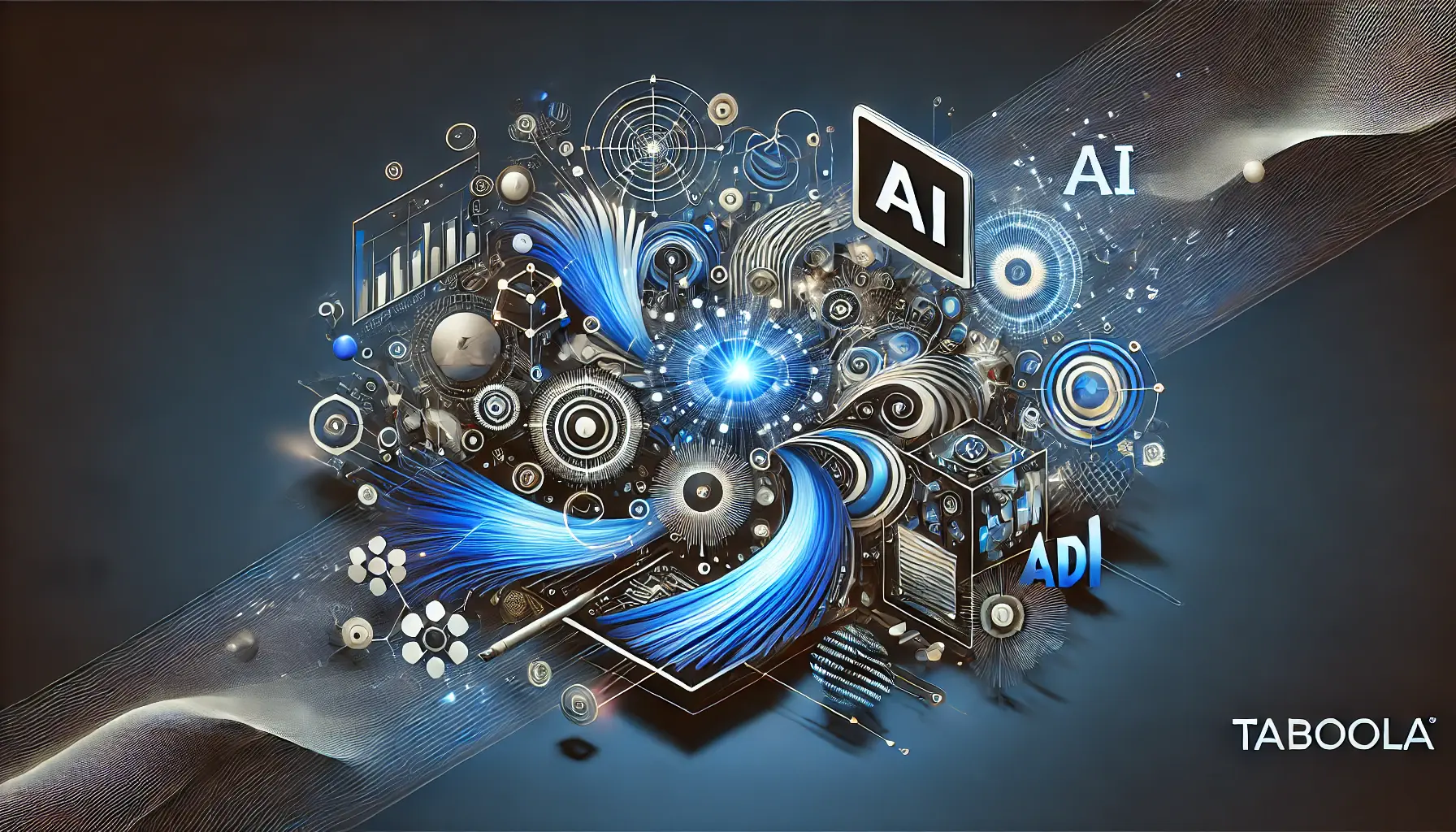
Visualizing Taboola’s generative AI tool that streamlines the ad creation process through machine learning.
Taboola’s Generative AI Tool: Simplifying Ad Creation
Taboola is launching a generative AI chat assistant, Abby, to attract small- and medium-sized businesses for ad campaigns, competing with Google and Facebook.
Built on OpenAI’s GPT-4The fourth-generation Generative Pre-trained Transformer, a language model developed by OpenAI., Abby simplifies ad campaign creation by enabling business owners to interact with the chatbot through conversational prompts.
Taboola’s vast ad data then selects the most effective images and strategies.
This tool is part of Taboola’s efforts to expand its advertiser client base and streamline the ad buying process for new advertisers.
By exploring these emerging advertising channels, businesses can deviate from traditional platforms like Google Ads and benefit from innovative technologies and unique user bases, opening new opportunities for growth and engagement.
Platforms like Pinterest Ads, Perplexity AI, and Taboola’s generative AI tools represent the next generation of advertising innovation.

Visualizing the exploration of Google Ads alternatives for a diverse and effective digital marketing strategy.
Summary: Exploring Google Ads Alternatives for Effective Digital Marketing
As businesses continue to navigate the complexities of the digital marketing landscape, relying solely on Google Ads may not be the most effective strategy.
Diversifying your advertising efforts can help you reach untapped audiences, optimize your budget, and achieve sustainable growth.
This article has outlined a range of Google Ads alternatives, each offering unique advantages tailored to different business needs and goals.

Illustrating the importance of diversification in digital marketing through a symbolic tree with branches representing various platforms.
The Importance of Diversification
Exploring alternatives to Google Ads is not just about cost-effectiveness; it is about expanding your reach, mitigating risks, and creating a more balanced and comprehensive marketing strategy.
By integrating platforms such as Microsoft Advertising and Amazon Advertising, businesses can tap into unique audience segments and engage users at different touchpoints.
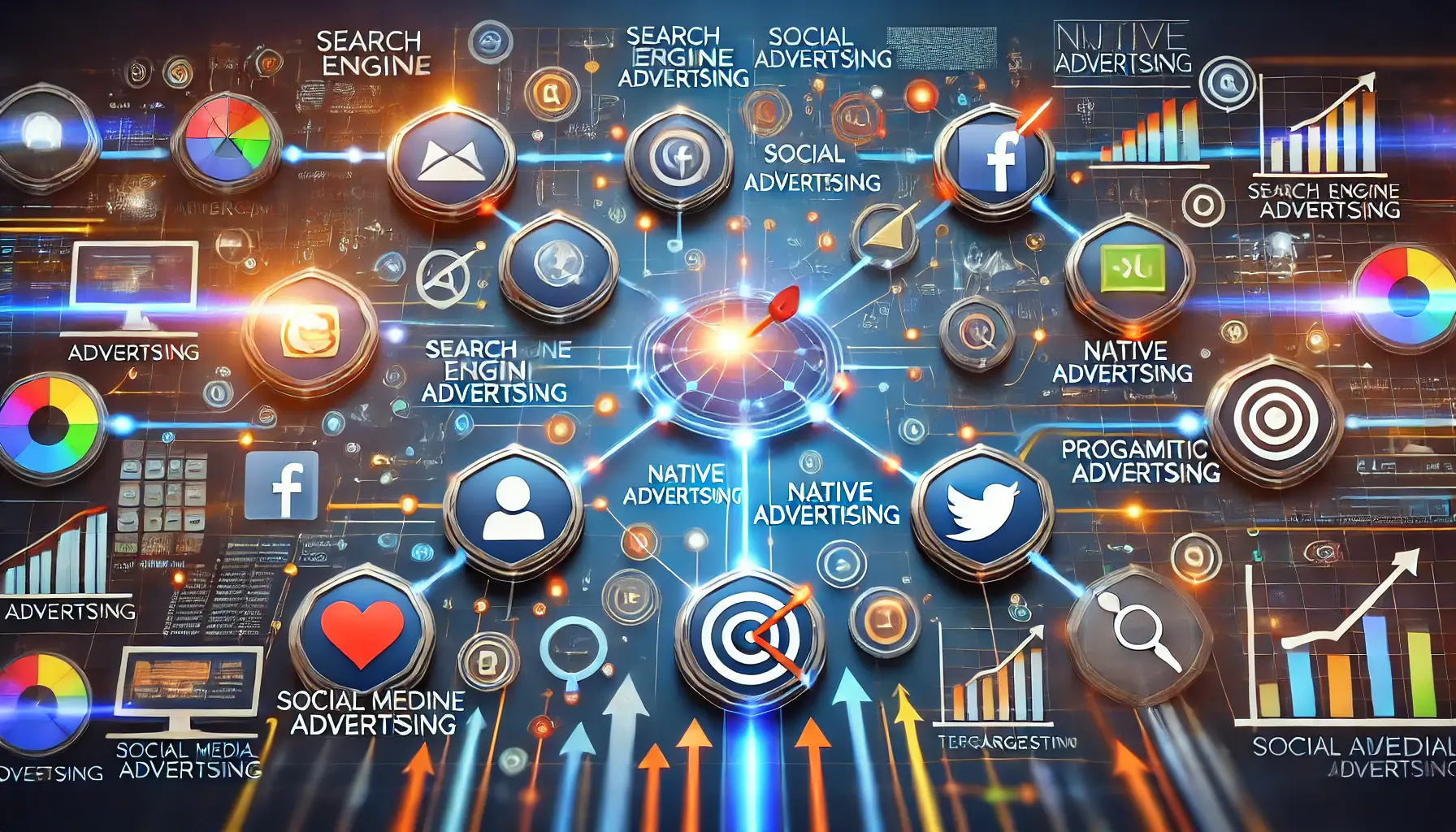
Illustrating the effectiveness of various key advertising channels in digital marketing.
Key Advertising Channels Discussed
- Search Engine Advertising: Microsoft Advertising and Yahoo Gemini offer more budget-friendly solutions and unique user demographics to target.
- Social Media Advertising: Leverage Facebook, Instagram, and LinkedIn Ads to build engagement, increase brand awareness, and foster relevant interactions within diverse audiences.
- Native Advertising Networks: Outbrain, Taboola, and RevContent ensure effective integration with content, drawing in more engagement and building user trust.
- Programmatic Advertising Platforms: Tools like The Trade Desk, MediaMath, and DV360 enable precise targeting and efficient ad management through automation.
- Emerging Platforms: Innovative platforms like Pinterest Ads, Perplexity AI, and Taboola’s AI-driven tools provide cutting-edge solutions for businesses looking to stay ahead of the curve.

Illustrating the importance of diversifying away from Google Ads by exploring alternative platforms.
Why Google Ads Alternatives Matter
Undeniably, the dominance of Google Ads in the digital advertising space is overwhelming, but pursuing alternatives reduces dependency on a single platform.
This not only minimizes risks but also uncovers opportunities for improved performance, tailored targeting, and innovative engagement strategies.
By integrating a mix of established platforms and emerging technologies, businesses can adapt to changing consumer behaviors and industry trends, ensuring long-term success in the competitive digital marketing landscape.

Symbolizing the conclusion of a digital marketing journey with insights and clarity.
Final Thoughts
These Google Ads alternatives can help transform how your business reaches and engages with its audience by incorporating them into your digital marketing strategy.
Be it search engines, social media, native advertising, or programmatic platforms, these tools empower businesses to optimize their advertising efforts and achieve measurable results.
The future of digital advertising belongs to those who can adapt, innovate, and remain open to the new frontiers that arise.
By leveraging the right combination of advertising channels, your business can realize its fullest potential and thrive in the ever-evolving digital landscape.
Incorporating a mix of established and emerging advertising platforms enables businesses to reduce risks and achieve sustainable growth.
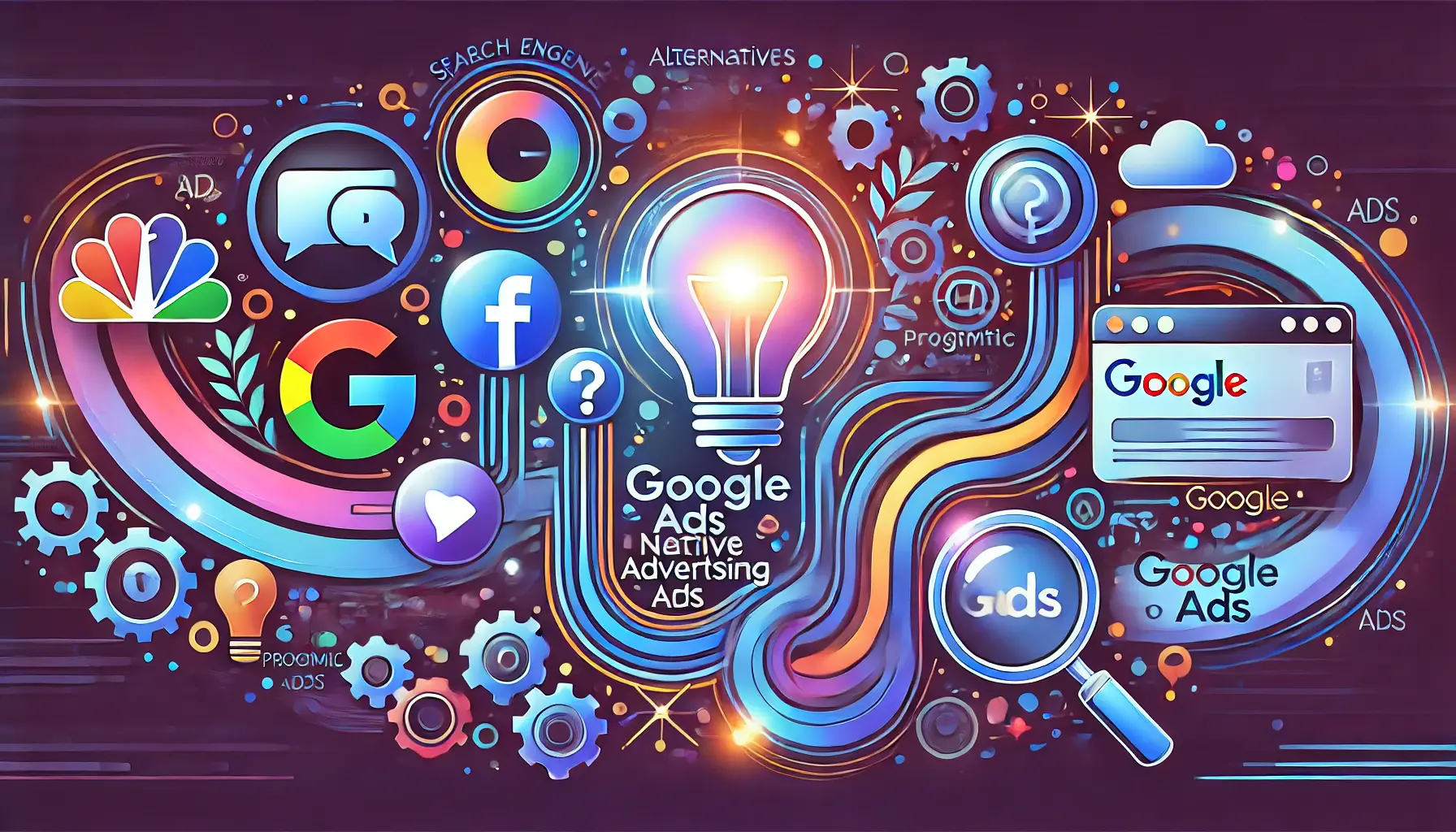
Visualizing the process of exploring alternatives to Google Ads through dynamic connections and inquiry.
Your campaigns can be managed by an agency specialized in Google Ads, check out our service page.
Questions and Answers About Alternatives to Google Ads
Some effective options include Microsoft Advertising, Facebook Ads, Amazon Advertising, LinkedIn Ads, and native advertising networks like Outbrain and Taboola.
Yes, many of them offer competitive pricing, and some platforms may provide lower per-click rates compared to Google Ads.
Consider your target audience, industry, budget, and campaign objectives to select a platform that aligns with your marketing goals.
Yes, utilizing multiple platforms can diversify your reach, mitigate risks, and enhance overall campaign performance.
